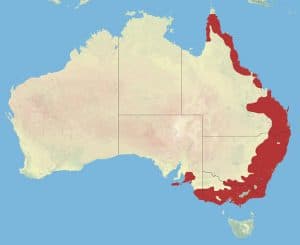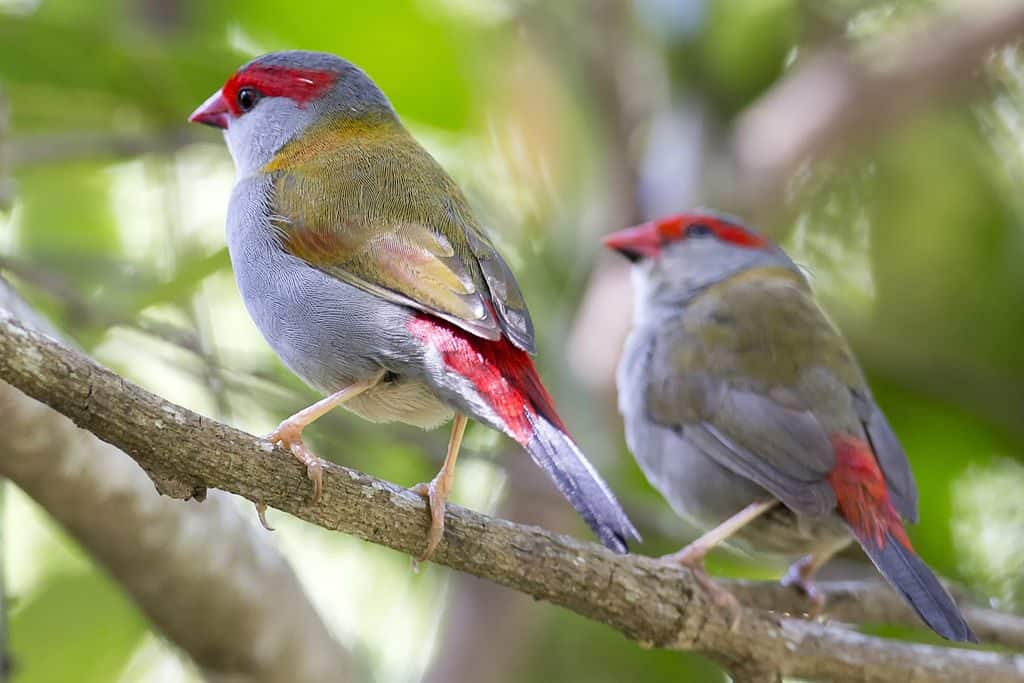The Red Browed Finch is a bird that often causes confusion due to its other name – the Sydney Waxbill. Although it has a bright red beak and delicate looks, this little bird isn’t a waxbill and is a member of the same family of Estrildidae finches as Star Finches and Cherry Finches. So who is the red browed finch and what are they like to keep?
In the wild

It is a species of Least Concern according to the IUCN with the most common areas being around Brisbane and Melbourne. It does suffer if the shrub cover is removed so in cleared areas, the species does decline. The birds are typically seen in groups of 10 to 20 birds that move around a small area.
The family containing these birds also contains the Star Finch, Cherry or Plum Headed Finch and the Crimson finch. Other names for the bird include the Red-browed firetail and the temporal finch due to its Latin name.
Spotting the red browed finch
You can understand when you look at these birds why they ended up with the common name of the Sydney Waxbill. With a bright red eye stripe and equally bright red beak, they do look a bit like waxbills such as the Common and Red Ear Waxbill. But the amount of colour on their body is something of a giveaway – they have a rich olive green back and grey head and breast while there is red around the rump.
Sexing the birds isn’t easy but a number of breeders have told me that when you compare two birds, you can spot the difference. Generally, the hen has a lighter breast colour than the male with a touch more fawn to the colour while the male bird is a steely grey shade.

Feeding and breeding
In the wild, these birds live on a grass seed diet as well as using any non-native species of plant that they find in their territory. This means that a good foreign finch mix is ideal for them in captivity as well as a specialist Australian finch mix with grass seeds included. They will also enjoy millet spray and extra seeds such as Niger seed, though amounts should be monitored if cage bred.
During the breeding season, the birds will feed chicks with live food such as mealworms or waxworms. Frozen pinkie worms and similar protein sources can also be offered for them to rear the chicks with, often mixed with greens and egg food to offer a balanced diet.
Normally, a large domed style nest is created from grass and twigs some 2-3 metres above the ground. Nests will often be in groups with pairs nesting close to others of their species. In captivity, a lot depends on how the bird was raised – for example if they were cage bred in a plastic finch nest then there is a better chance they will choose this type of nest themselves. Good cover is important for them to breed as they are light sitters and will flee the nest if they feel endangered – this means if they are in a cage, added fake plants to the cage to help them feel safe.
Between 4-6 eggs are laid with usually 2-3 clutches a year. they are incubated for around two weeks and chicks fledge at around two weeks. The chicks are fed by both parents and will be weaned at around four weeks old. They usually go through their first moult at around 12 weeks of age.
5
0.5